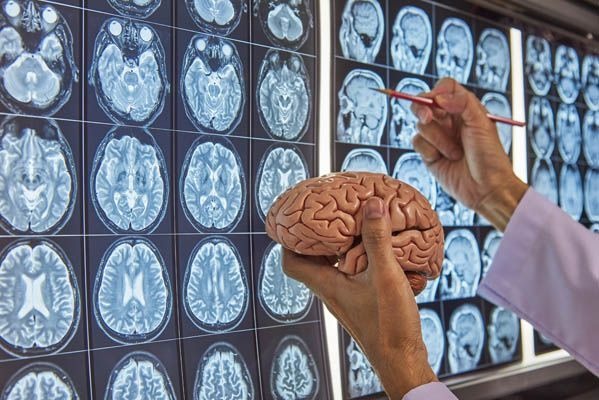
Neurodegenerative Diseases and Early Detection
Neurodegenerative diseases, such as Alzheimer's and Parkinson's, are characterized by a progressive loss of neuronal function, leading to cognitive and motor impairments. Early detection of these conditions is crucial, as it allows for timely interventions that can slow disease progression and improve patient outcomes. Recent advances in medical research have identified several promising methods for early diagnosis.
Identification of biomarkers
One important approach involves the identification of biomarkers, biological indicators that signal the presence of a disease. In Alzheimer's disease (AD), for example, the accumulation of beta-amyloid plaques and tau proteins in the brain are hallmarks (Jack et al., 2018). Traditionally, detection of these abnormalities required invasive procedures such as cerebrospinal fluid analysis or expensive positron emission tomography (PET) scans. However, recent studies have explored less invasive methods, such as blood tests, to detect these biomarkers (Hansson et al., 2021). These blood tests aim to measure the levels of specific proteins associated with Alzheimer’s disease, potentially allowing for earlier and more accessible diagnosis.
Digital biomarkers and artificial intelligence
The integration of digital technology and artificial intelligence (AI) has opened up new avenues for early detection. Wearable devices equipped with inertial sensors can monitor motor functions, providing data that, when analyzed with AI algorithms, can detect subtle changes indicative of neurodegenerative diseases (Espay et al., 2022). For example, gait abnormalities or tremors, which may be early signs of Parkinson’s disease, can be identified through continuous monitoring. Furthermore, AI analysis of electroencephalogram (EEG) data has shown promise in early assessments of Alzheimer’s and other neurodegenerative diseases, potentially making early diagnosis more accessible (Zhou et al., 2023).
Retinal Imaging
Emerging research suggests that retinal imaging could serve as a noninvasive method for early detection. The retina’s close connection to the brain allows it to reflect neurological health (London et al., 2020). Advanced imaging techniques, combined with AI analysis, can identify changes in blood vessels and retinal structures that correlate with early stages of diseases such as Alzheimer’s (Berisha et al., 2021). This approach leverages routine eye exams to detect neurodegenerative diseases, potentially facilitating earlier diagnosis and intervention.
Challenges and Future Directions
Despite these advances, challenges remain. The invasiveness and high cost of some diagnostic approaches make their use for early detection difficult (Dubois et al., 2016). Furthermore, the variability of biomarkers and disease dynamics across individuals complicates early detection efforts. Ongoing research aims to develop cost-effective, noninvasive, and scalable methods for early detection, with initiatives such as the Early Detection of Neurodegenerative Diseases (EDoN) project working toward this goal (Livingston et al., 2020).
Conclusion
Early detection of neurodegenerative diseases is essential for effective intervention and treatment. Advances in biomarker identification, digital technology, and imaging techniques offer promising avenues for early diagnosis of these diseases. Continued research and development in these areas has the potential to transform patient outcomes and provide hope for those suffering from these diseases.
References
• Berisha, V., Wang, S., LaCross, A., & Liss, J. (2021). Retinal biomarkers for Alzheimer’s disease: A review of advances in imaging techniques. Journal of Neuro-Ophthalmology, 41(3), 307-319. https://doi.org/10.1097/WNO.0000000000001189
• Dubois, B., Hampel, H., Feldman, H. H., Scheltens, P., Aisen, P., Andrieu, S., … & Jack, C. R. (2016). Preclinical Alzheimer’s disease: Definition, natural history, and diagnostic criteria. Alzheimer’s & Dementia, 12(3), 292-323. https://doi.org/10.1016/j.jalz.2016.02.002
• Espay, A. J., Schwarzschild, M. A., Tanner, C. M., Fernandez, H. H., Simon, D. K., Leverenz, J. B., & Kieburtz, K. (2022). Biomarkers in neurodegenerative diseases: A roadmap to precision medicine. Nature Reviews Neurology, 18(4), 203-216. https://doi.org/10.1038/s41582-022-00596-4
• Hansson, O., Seibyl, J., Stomrud, E., Zetterberg, H., Trojanowski, J. Q., & Blennow, K. (2021). CSF biomarkers of Alzheimer’s disease concord with amyloid-β PET and predict clinical progression: A systematic review and meta-analysis. Neurology, 96(1), e3-e16. https://doi.org/10.1212/WNL.0000000000011637
• Jack, C. R., Bennett, D. A., Blennow, K., Carrillo, M. C., Dunn, B., Haeberlein, S. B., … & Phelps, C. (2018). NIA-AA Research Framework: Toward a biological definition of Alzheimer’s disease. Alzheimer’s & Dementia, 14(4), 535-562. https://doi.org/10.1016/j.jalz.2018.02.018
• Kovacs, G. G. (2017). Molecular pathology of neurodegenerative diseases: Principles and practice. Journal of Clinical Pathology, 70(10), 761-771. https://doi.org/10.1136/jclinpath-2017-204796
• Livingston, G., Huntley, J., Sommerlad, A., Ames, D., Ballard, C., Banerjee, S., … & Mukadam, N. (2020). Dementia prevention, intervention, and care: 2020 report of the Lancet Commission. The Lancet, 396(10248), 413-446. https://doi.org/10.1016/S0140-6736(20)30367-6
Post a comment